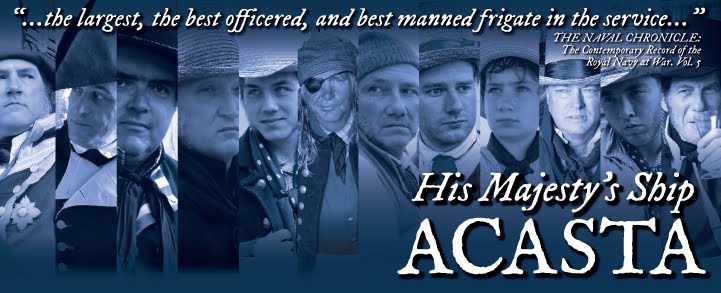Today's post written by N. Weremeichik
When a man volunteered or was recruited, he was to be issued “slop cloaths”. These slop clothes are to be sold to them and “defalked” or deducted from their pay. According to the 1790 Naval Regulations, slops were obtained and used in the following conditions:
• The Captain must arrange for slops to supply the ship while in port, and does what he can to prevent having to purchase slops abroad.
• When approved, they must be marked with a seal from the Navy Office; and inspected by the Captain, Master, Bo ‘sun, and Purser.
• No inferior slops are to be issued, they are to be returned to the manufacturer if not satisfactory. If the ship sails before the slops are reviewed, the clothes are to be returned to the manufacturer when next in port and “make Abatements in the Price, proportionable to what they are inferior to the Patterns.” (Return it and get your money back.)
• If a man is pressed and doesn’t have appropriate clothes for service, the Captain can supply him with clothes and bedding not exceeding one month’s wages.
• Nobody gets a second allotment of slops until two months of service have passed, and cost ten shillings each. The next set only is available to purchase after two month periods.
• All slop clothes are to be distributed publicly in front of the officers and company. The captain is not to supply slops to those who don’t truly need it, but is to “oblige those who are ragged.”
• The Captain is to take account of slops in the Muster and Pay books, and keep record in a separate slop book. Before payment of the ship, or if the Captain is removed, the books are to be sent to the Comptroller of the Navy. These books are to be signed by the Captain, the Master, the Bo ‘sun, and Purser or any two of them.
• If a man is discharged with a ticket, the Captain must record (in words) the value of the slops the man received on his ticket.
• In the rare circumstance that the men need slops abroad, the Captain is to inspect the clothes and judge if they are similar to the one used by the Navy. They are to be moderately priced and must send an invoice to the Navy Board and mark them under the head of the supplier.
• Contractors for slops are to give the purser twelve pence in the pound for his pains in accounting and issuing the clothes. The contractor is also allowed to give the slops to the Master or any officer of the ship.
• Should a man die, his clothes and effects can be sold at auction, and the charges are put to the ones who bid and won the items, and recorded in the Muster, Slop and Pay books. Any business related to this is to be logged and the Purser is to be compensated 12 pence in the pound for his pains.
• No seaman can bid for officer’s clothes above his rank or for any effects above their value, according to the Purser and the Master, who must be present for the transactions. A man cannot purchase items above his wages.
• Upon death or removal of the Purser, the officers (who account for provisions, slops, stores, dead men’s clothes, bedding, &c) are to deliver a survey to the succeeding Purser, including damaged and unserviceable goods. A copy is to be placed in the Slop Book, and signed by the officers who completed the survey.
There are other instances in the 1790 Regulations where particular protocols were passed on Slop Cloathes, dealing with the sick and new recruits.
Instructions relating to the Execution of two Acts of Parliament passed Anno 1mo. Geo. II. In Favour of Seamen employed in His Majesty’s Service,
pg. 49, Article II
In case any of the said seamen or Landsmen shall, at their Request, be supplied with Slop-Cloaths or Bedding, at their coming on Board, the Captain is carefully to set off the Value of the same against their Names in the Lifts he sends to the Navy-Board for payment of the Two Months Advance of Wages, in order to their deducting the same.
Rules to be observed in sending Sick or Hurt Seamen out of His Majesty’s Ships for Cure,
Pg. 57, Article III
If any of the said Men shall be in Want of proper Necessaries at their going away from the Ship, the Captain may order the Purser to supply them out of the Slop Cloaths.
Rules to be observed in sending Sick or Hurt Seamen out of His Majesty’s Ships for Cure,
pg. 58, Article VIII
If the Agent shall certify to the Captain, that he has supplied any Sick Men with Cloaths, whilst they were in Quarters, of which they were absolutely in Want, he is to charge the same against their Names on the Ship’s Books, in order to its being defalked out of their Wages; but the agent is not to do it whilst the Ship is in Port, but to apply to the Captain to be supplied out of the Slop Cloaths on Board.




















